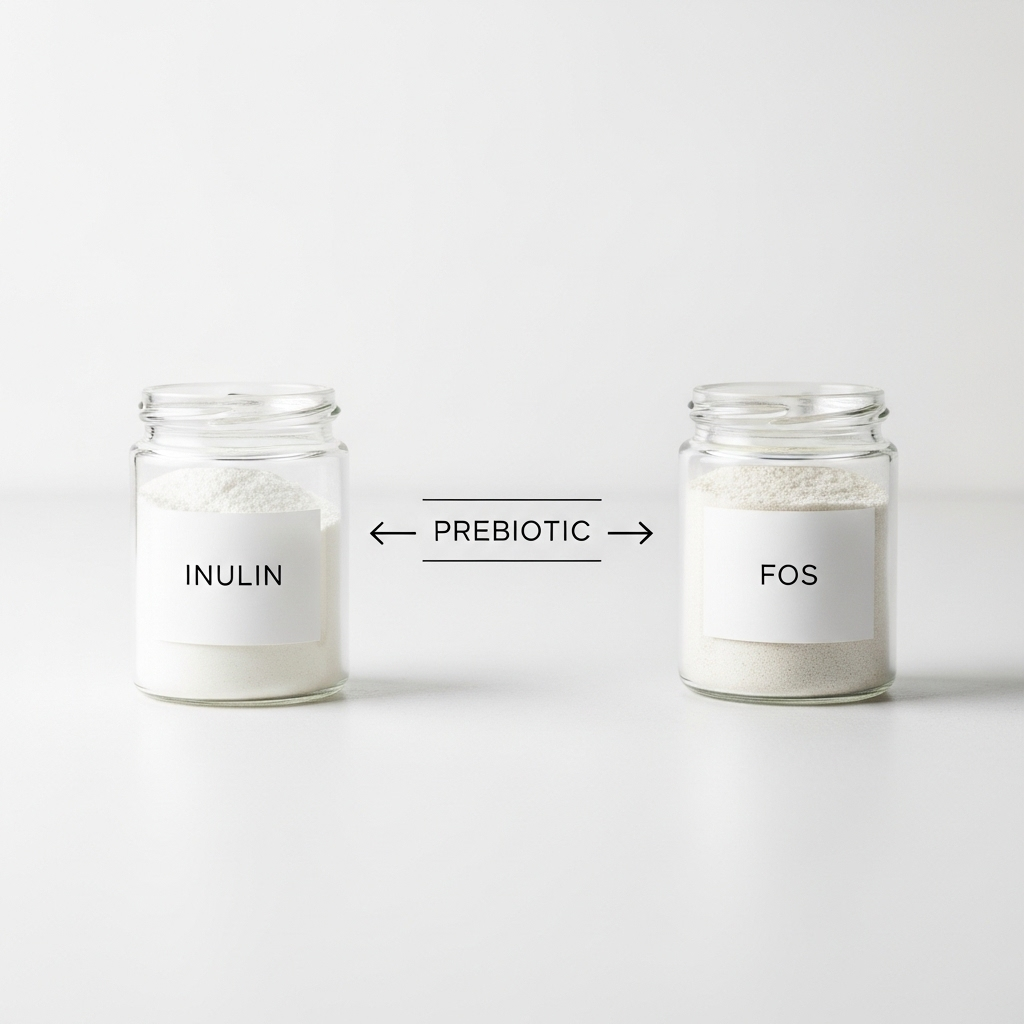Inulin vs FOS for Pets: Which Prebiotic to Choose?

Prebiotics are increasingly included in pet diets and supplements to support healthy digestion and a balanced gut microbiome. Two common prebiotics you’ll see on labels are inulin and FOS (fructooligosaccharides). This guide explains how they work, the main differences, safety considerations, and practical advice for choosing the right option for your dog or cat.
What are prebiotics?
Prebiotics are nondigestible food components that feed beneficial gut bacteria. Unlike probiotics (live bacteria), prebiotics are fibers or oligosaccharides that pass through the stomach and small intestine relatively intact and are fermented by microbes in the colon. The result can be improved digestion, more stable stool, and support for immune and metabolic health.
Inulin and FOS explained
– Inulin: A longer-chain fructan fiber commonly extracted from chicory root or Jerusalem artichoke. It is relatively resistant to digestion until it reaches the colon, where gut bacteria gradually ferment it.
– FOS (fructooligosaccharides): Shorter-chain fructans that are often derived from partial breakdown of inulin or found naturally in certain plants. FOS tends to be more rapidly fermented than longer-chain inulin.
How these prebiotics work in pets
Both inulin and FOS act as food for beneficial bacteria such as Bifidobacteria and some Lactobacilli species. Their fermentation produces short-chain fatty acids (SCFAs) like butyrate, acetate, and propionate, which help nourish colon cells, support gut barrier function, and can influence systemic health. In pets, prebiotic supplementation can improve stool quality, reduce odor, and help maintain a healthy microbial balance after stressors such as antibiotics or diet changes.
Differences: Inulin vs FOS
The main practical differences relate to chain length, fermentation speed, and tolerance:
| Feature | Inulin | FOS |
|---|---|---|
| Structure | Longer-chain fructan (polymer) | Shorter-chain fructooligosaccharide |
| Fermentation speed | Slower, reaches deeper colon | Faster, more rapid fermentation in proximal colon |
| Typical effects | May support broader sections of the colon and ongoing fiber benefits | Often produces quicker increases in beneficial bacteria and quick SCFA production |
| Tolerance (gas, bloating) | Can cause gas and loose stool if introduced too fast or at high dose | Tends to cause gas/loose stool at lower amounts for sensitive pets but may be gentler when dosed small |
| Best use case | Long-term fiber support and stool quality at steady doses | Short-term support, gentler ramp-up or when a quick effect is desired |
One concise Pros/Cons table
| Item | Pros | Cons |
|---|---|---|
| Inulin | Supports broader colon regions, sustained fermentation, good long-term fiber source | Slower-acting; more likely to cause gas or loose stool if started too high |
| FOS | Faster fermentation, often effective at lower doses, may give quicker probiotic support | Rapid fermentation can cause gas/diarrhea in sensitive animals; shorter action |
Which to choose: practical guidance
There’s no one-size-fits-all answer. Consider your pet’s species, size, health status, and sensitivity to fiber:
Dogs
Many dogs tolerate either prebiotic when introduced gradually. For dogs with sensitive stomachs or histories of gas and loose stool, start with a small amount of FOS or a mixed prebiotic with lower total dose and increase slowly. For long-term stool quality and fiber benefits, inulin (or a mix of inulin + FOS) can be useful.
Cats
Cats are obligate carnivores with less fermentation capacity than dogs. They may benefit from small, measured amounts of prebiotic, but they can be more sensitive to added fibers. Use lower doses and only supplement if recommended by your veterinarian for a specific issue.
Pets with specific conditions
– Diarrhea or after antibiotics: Short-term FOS or a synbiotic (prebiotic + probiotic) can help restore beneficial bacteria.
– Chronic constipation: Longer-chain inulin may help by increasing fermentable fiber and SCFA production, but check with your vet.
– Obesity or diabetes: Prebiotics are sources of non-digestible carbs; they usually have minimal direct impact on blood glucose but discuss with your vet, especially for diabetic pets.
How to introduce prebiotics and dosing tips
– Start low and go slow: Begin with a very small amount once daily and increase over 1–2 weeks while watching stool quality and gas.
– Follow product directions: Commercial pet prebiotic products provide dosing by weight. If you’re using a powder intended for humans, follow conservative portioning or ask your vet.
– Typical household approach: Many pet owners start with a pinch or 1/8–1/4 teaspoon for small dogs/cats and increase gradually; for medium or large dogs, doses may be larger—but always follow the supplement label or vet guidance.
– Combine wisely: Prebiotics can be combined with probiotics (synbiotics) to support colonization of beneficial strains.
Safety and side effects
Common side effects of inulin and FOS include increased gas, bloating, and loose stools if started too quickly or given in excessive amounts. These effects usually resolve with dose reduction. Rarely, pets with severe gastrointestinal disease, immune suppression, or certain metabolic disorders may not be appropriate candidates for prebiotic supplementation—consult your veterinarian if your pet has chronic illness, is on multiple medications, is very young, or is elderly.
Combining prebiotics and probiotics (synbiotics)
Synbiotics pair prebiotics (food) with probiotics (live strains) to help beneficial bacteria survive and multiply. Many veterinary formulas combine FOS or inulin with probiotics tailored for dogs and cats. This can be especially useful after antibiotic therapy or during periods of GI upset, but choose products formulated for pets and consult your veterinarian for strain selection and dosing.
FAQ
-
Are inulin and FOS safe for my pet?
Generally yes for healthy dogs and cats when used at recommended doses, but introduce slowly and consult your vet if your pet has health issues.
-
Will prebiotics make my pet gassy?
Possible—gas and mild diarrhea are the most common side effects, especially if you start at a high dose. Reducing the amount and increasing gradually usually solves this.
-
Should I use inulin or FOS with a probiotic?
Combining them (a synbiotic) can be beneficial because the prebiotic supports the probiotic strains. Use products designed for pets for best results.
-
Can kittens or puppies take prebiotics?
They may benefit in certain situations, but dosage and safety should be confirmed with your veterinarian before use in young animals.
Key Takeaways
- Inulin and FOS are prebiotic fibers that feed beneficial gut bacteria and can improve stool quality and gut health.
- FOS ferments faster and can act quicker; inulin is longer-chain and provides sustained fermentation through the colon.
- Start with small amounts and increase slowly to reduce gas and loose stools.
- Choose FOS for quick support or sensitive pets (at low starting doses); choose inulin or a blend for long-term fiber benefits—always personalize to your pet.
- Consult your veterinarian before starting prebiotics for pets with chronic disease, very young or elderly animals, or pets on multiple medications.
Disclaimer
This article provides general information about inulin and FOS for pets and is not a substitute for professional veterinary advice. Dosage needs and safety considerations vary by species, age, weight, and health status. Always consult your veterinarian before starting any new supplement, especially if your pet has pre-existing medical conditions or is taking medications.

Leave a Reply